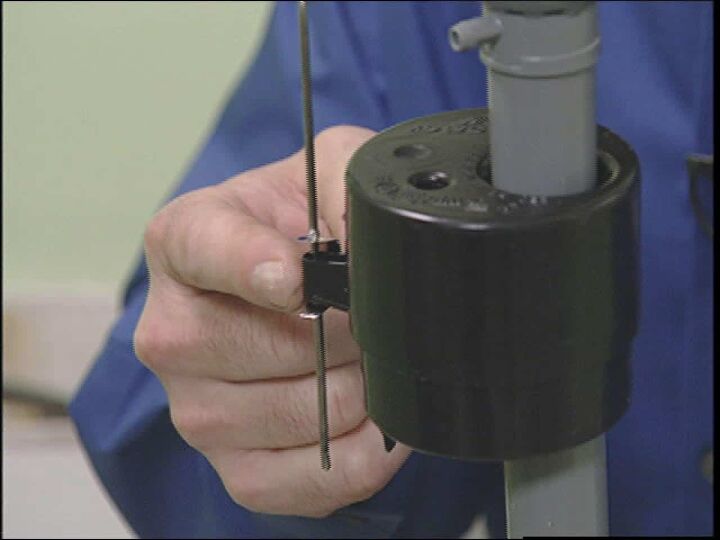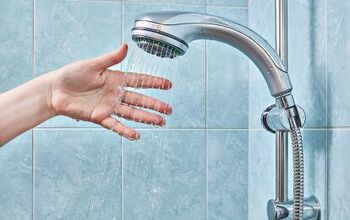How To Convert A Low Flow Toilet To High Flow (Do This!)

Low-flow toilets save you money and help the environment, but they lack flushing power. However, they have also become the standard and a fixture in almost every home. With that said, how do you convert a low-flow toilet to a high-flow toilet?
You cannot convert a low-flow toilet into a high-flow toilet, but you can increase flush power. Raise your tank float or cylinder float to make more powerful flushes. Otherwise, you can repair or replace the flush valve, so your flushes are stronger.
Improve your flush strength and clean your toilet regularly to keep it that way. Try to clean the toilet flush holes whenever possible to allow more water into the bowl. Let’s take a look at how you can strengthen your toilet’s flushing power.
Do You Need to Hire a Plumber?
Get free, zero-commitment quotes from pro contractors near you.

Can You Turn a Low-Flow Toilet Into High-Flow?
You cannot technically turn a low-flow toilet into a high-flow toilet. With that said, you can work to improve the water flow in your low-flow toilet to make it perform better. Low flow toilets have less flushing power than the classic toilets that were the standard for decades.
Old toilets use between 3.5 and 7 gallons of water per flush which made them more powerful. However, modern low-flow toilets use between 1.2 and 1.6 gallons of water per flush. Low-flow toilets can save you money, but they also provide a less powerful flush that some homeowners dislike.
How To Increase Toilet Flush Power
You can increase your toilet flush power and keep it that way by frequently maintaining it. Regularly clean your toilet and you’ll find that weak flushes are a thing of the past. Let’s take a look at all of the ways that you can increase your low-flow toilet’s flushing power.
Step 1. Raise Tank Float
You can improve the flow in your toilet if you carefully raise the tank float. The water level in your tank may be too low, and that can impact your flushing power. You can find out on your own if you remove the top of the tank and look inside to see how much water there is.
Look at the float inside of the tank and try to find the screw between the float and the fill valve. Take a screwdriver, insert it into the screw, and turn it slowly. You’ll see the float rise as you turn the screw, and you can stop it when it reaches the proper height.
More water will fill the tank, and you can stop turning the screw when you are happy with the level. The added water in the tank will allow for more powerful flushes each time you use the toilet.
Step 2. Adjust Cylinder Float
You can also adjust the cylinder float to improve your toilet’s flushes and overall performance. Cylinder floats are easy to spot because they are in the center of the tank, and their cylinder shape is easy to spot. Locate the thin adjustment stem along with the cylinder float and that runs into the fill valve.
Grab the release clip that is attached to the adjustment stem and lightly pinch it. You may have to use a screwdriver if it doesn’t raise when you pinch it. Turn the screw on the adjustment stem clockwise to raise the cylinder float.
You can generally raise the cylinder float by hand. More water will enter the tank and it will improve your flushes.
Step 3. Clean Toilet Flush Holes
Flush holes allow your toilet to fill with water each time that you flush it. They can clog after continual use and it eventually weakens your toilet’s flushing power. The only way to improve the performance is to thoroughly clean the flush holes on your toilet.
You can use something as simple as a bobby pin to remove an obstruction. Be careful so that you don’t get the bobby pin or similar small item stuck in the hole. Try to clean the toilet with an acidic toilet bowl cleaner, like Zep, afterward.
You can avoid clogged toilet flush holes if you regularly clean them and treat them with chemicals. It will flush more powerfully after you unclog the toilet flush holes.
Step 4. Unclog the Toilet
Your toilet may have a mild clog deep in the drain that affects the flushing power. Unclog your toilet to increase the power of each flush. You can use a plunger, drain snake, enzyme chemicals, or Drano to solve the problem.
Be careful with chemicals because you can damage your toilet if you leave Drano or Liquid Plumber in the toilet for too long. Drain snakes and plungers are the most effective ways to remove clogs in the toilet. Plunge the toilet up to 10 times to knock any blockage loose and improve the flow of water.
You can also use enzyme cleaners like Powder Plunger and Green Gobbler to dissolve blockages. These methods help even if the toilet isn’t fully clogged. Clogs sometimes take a while to form, so it’s a great idea to treat your toilet preemptively.
Step 5. Repair Flush Valve
You can find the flush valve in your toilet’s tank near the cylinder float and tank float. The flush valve forms a seal with tight suction and allows your toilet to flush each time. However, sometimes the seal comes loose and leads to weak flushes or no flushes at all.
Remove the top from your toilet tank and inspect the flush valve to see how tight it is. You will need to repair the flush valve if it is loose so it will flush properly. Simply push the ring around it down so that it is a tight fit and forms a proper seal.
However, you should replace the flush valve entirely if it appears to be damaged. Toilet flush valves are easy to replace because you pop them into place. Most toilet flush valves only cost $10, but make sure that you get one that’s compatible with your toilet.
Step 6. Bleach
Put bleach in your toilet if you want to dissolve debris and clogs to make it flush better. It’s best to mix water with bleach to dilute it so that you don’t damage your toilet’s pipes. Add one part bleach for every two parts of water for this solution.
Fill the bowl with up to a gallon of bleach and water mixture to get the best results possible. Allow the mixture to sit in the toilet for 30 minutes to dissolve blockages fully. Flush the toilet after 30 minutes to wash the mixture down and clean the pipes along the way.
Try to flush it another 3-5 times after the initial flush so there is no bleach left in the pipes. This is to ensure that you avoid pipe damage.
Related Questions
How much water do low-flow toilets use?
Low-flow toilets use between 1.2 gallons and 1.6 gallons of water for every flush. Older toilets used as much as 3.5-7 gallons of water per flush contributing to exorbitant water bills each month. Low-flow toilets allow you to save as much as $110 per year on water bills.
Does putting a brick in the toilet save water?
Putting a brick in the toilet saves water, but not enough to make it worth the trouble. The brick takes up enough space for the toilet to limit the number of gallons per flush in a toilet. However, the brick can also damage the toilet and affect its function entirely so it’s not worth it.
How do you flush out less water?
You can flush out less water if you put a plastic water bottle in the tank behind your toilet. Fill the plastic bottle with water and pebbles then put it inside the tank. The bottle makes it so that your tank needs less water to fill up, and that limits the amount per flush.
How do I know if my toilet is low flow?
You can tell if your toilet is low-flow if you lower the seat and check the stamp on it. The stamp indicates how many gallons of water the toilet uses per flush, and 1.6 gallons signifies low flow. Otherwise, you can tell that your toilet is low flow if you bought it in recent years.
Do You Need to Hire a Plumber?
Get free, zero-commitment quotes from pro contractors near you.

What Did We Learn?
You can’t turn a low-flow toilet into a high-flow toilet. However, you can raise the tank float or cylinder float to make it flush better. Try to adjust the ring on the flush valve to increase suction and create a stronger seal.
Otherwise, you can plunge or snake the toilet to improve flush strength. Clean the toilet regularly to ensure that it flushes well every time that you use it. Use enzymes such as Drano or Green Gobbler sparingly to avoid damage, but they do help improve flushes.
You can also make a mixture of bleach and water to dissolve obstructions and increase flush power. Try each of these methods to improve your toilet’s performance.
Related Guides

Nick Durante is a professional writer with a primary focus on home improvement. When he is not writing about home improvement or taking on projects around the house, he likes to read and create art. He is always looking towards the newest trends in home improvement.
More by Nick Durante

















![10 Best Electric Pressure Washers – [2022 Reviews & Guide]](https://cdn-fastly.upgradedhome.com/media/2023/07/31/9070600/10-best-electric-pressure-washers-2022-reviews-guide.jpg?size=350x220)















